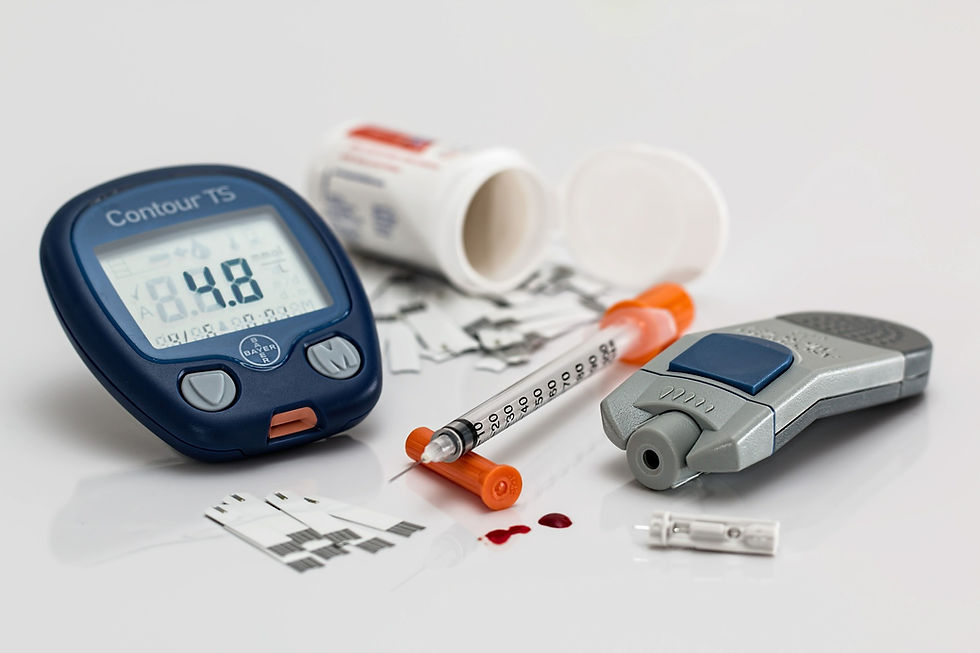
In recent years, the lay population is seized of the scourge of Diabetes Mellitus. It is often discussed and seems to have become rather common in Indian population.
Diabetes is more of a lifestyle disease. It is genetically inherited but manifests itself in its full form when the second hit of changed lifestyle and environmental factors occurs. In fact, India has become the world's leading nation in incidence of Diabetes.
Obesity, especially truncal obesity is an important risk factor for Diabetes, and in some population groups, a high incidence of obesity is invariably associated with a high incidence of Diabetes. Our body keeps blood glucose within a narrow range under the influence of a hormone called Insulin. This is secreted by an organ called pancreas. In response to a meal, pancreas secrets Insulin which helps push the blood glucose into body cells for utilization as a source of energy. But, under the influence of Insulin, excess of glucose more than body's requirement is stored as fat. Physical inactivity and excess consumption of dietary calories results in obesity. The body fat then causes resistance to the action of Insulin and results in Diabetes.
The excess glucose in the blood stream causes alteration in the blood vessels of all organs and systems but the target organs especially affected are the retina of the eyes, brain and nerves, the blood vessels (coronaries) of the heart, and the kidneys.
Kidneys are highly vulnerable to the effects of high blood sugar because in health, one fourth of the total blood supply is directed to the kidneys for their function of removal of waste products, drugs, toxins, certain electrolytes and heavy metals from the blood. So these small blood vessels in the kidneys get altered by the excess glucose going through them, resulting in chronic kidney damage. Even when blood glucose control is reasonable, a long duration of diabetes can eventually lead to kidney damage.
Eventually, the damaged kidneys fail and the patient requires renal replacement therapy in the form of dialysis and kidney transplant. In fact, 40-50% of kidney failures in the world are due to diabetic kidney disease.
The solution lies in preventing diabetes and its resultant kidney damage rather than its treatment. Since we cannot change our genetic constitution, primary prevention lies in preventing the second hit of obesity due to poor dietary habits and lifestyle changes in the form of inadequate physical activity. High blood pressure, smoking, alcohol and certain drugs and toxins can add to this damage to the kidneys.
Once diabetes is detected, a strict control of blood glucose through dietary restrictions, maintenance of ideal body weight through regular physical activity, tight control of blood pressure through salt restriction and prescription drugs, smoking cessation and avoidance of alcohol help in secondary prevention of diabetic kidney disease.
Our kidneys are precious. They start functioning right from the time the foetus is in mother's womb and they continue to keep us healthy throughout life through elimination of wastes and toxins. Failed kidneys result in accumulation of wastes and toxins in the body and these do not allow even other organs and systems to function normally.
So we must remember to keep our kidneys in good health and primarily prevent any damage to them. The D in diabetes stands for discipline.
Let me quote an old Sanskrit sloka here:
"Om Sarve Bhavantu Sukhinah
Sarve Santu Niraamayaah |
Sarve Bhadraanni Pashyantu
Maa Kashcid-Duhkha-Bhaag-Bhavet |
Om Shaantih Shaantih Shaantih ||"
Meaning:
1: Om, May All be Happy,
2: May All be Free from Illness.
3: May All See what is Auspicious,
4: May no one Suffer.
5: Om Peace, Peace, Peace.
Dr (Lt Gen) Umesh Kumar Sharma
MBBS, MD, DM(Nephrology)
+91 96506 00435
The author is a senior Nephrologist former Commandant Army Hospital R R
Comments